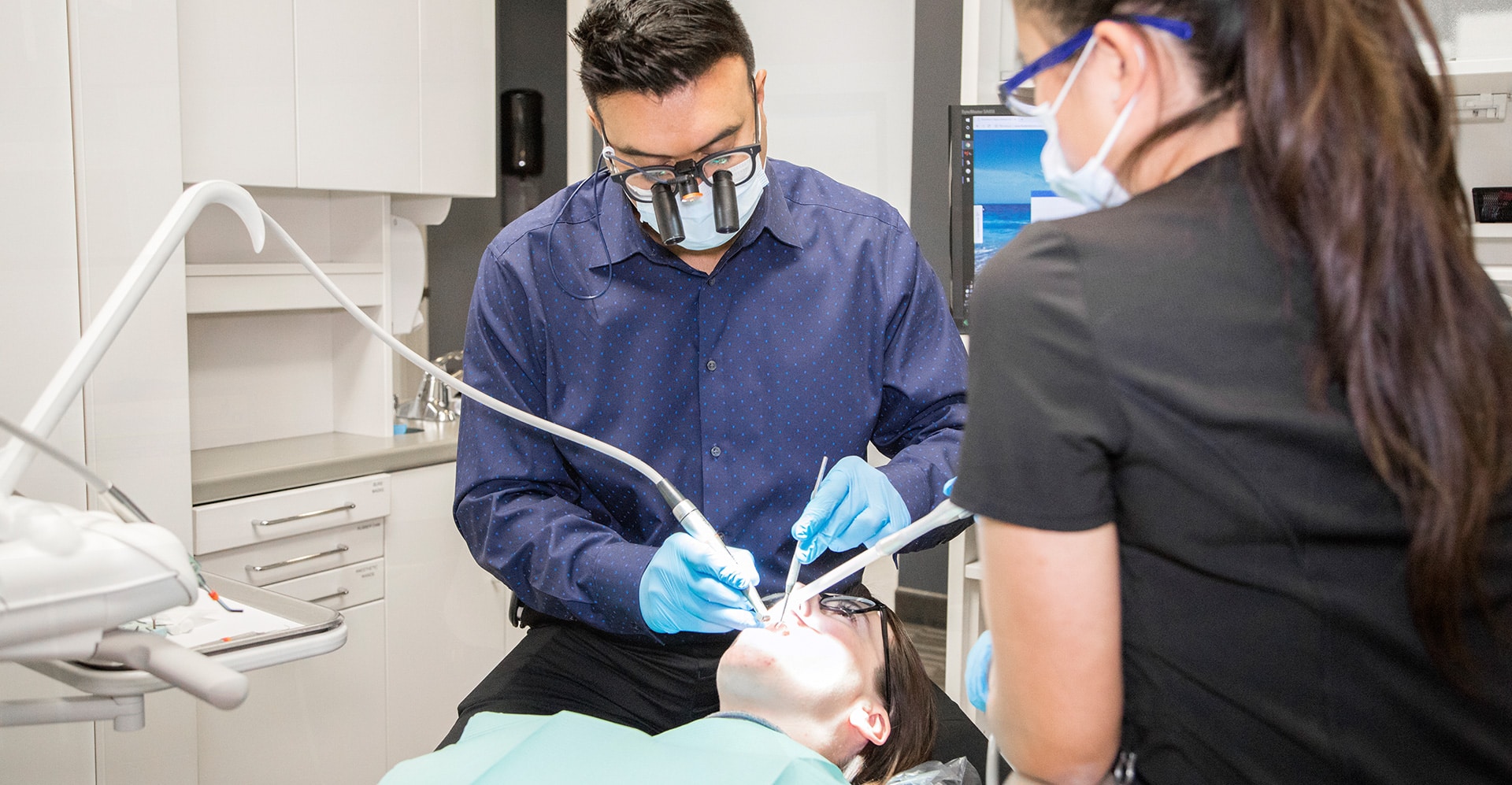Eruption Of Your Child’s Teeth in Calgary, AB
Most children experience the eruption of primary teeth (also called deciduous teeth or baby teeth) on a similar developmental timeline. Under the gums, a complete set of primary teeth begins to emerge during the fourth month of pregnancy. Thus, a nourishing prenatal diet is crucial for the development of the child’s teeth, gums, and bones.
Between the ages of six months and one year, the first primary tooth breaks through the gums. At three years of age, most children have a “full” set of twenty primary teeth. Following the eruption of the first tooth, the American Dental Association (ADA) recommends parents schedule a “well-baby” appointment with a pediatric dentist.

Pediatric dentists discuss prevention strategies with parents and children, emphasizing the importance of a sound, “no tears” daily homecare routine.
Even though primary teeth are deciduous, they facilitate speech production, jaw development, chewing habits, and the alignment and spacing of adult teeth. A child’s primary teeth should be cared for properly in order to prevent painful tooth decay, premature tooth loss, malnutrition, and childhood periodontal disease.
What is the order in which primary teeth emerge?
A general rule-of-thumb is that the first teeth to emerge are the central incisors (the very front teeth) on the lower and upper jaws (6-12 months). A soft, clean cloth can be used to gently clean these (and any other primary teeth) to reduce the risk of bacterial infection. When a child is 6 to 7 years old, the central incisors are the first to fall out.
On the upper and lower jaws, the lateral incisors (immediately adjacent to the central incisors) emerge (9-16 months). It is usually between the ages of 7 and 8 that these teeth are lost. The first molars, the large, flat teeth located towards the back of the mouth, appear on both the upper and lower jaws between the ages of 13 and 19 months. There may be pain associated with the eruption of molars. A clean pair of fingers, a cool gauze, or a teething ring can all provide relief from discomfort and soreness. It is common for children between the ages of 9 and 11 to lose their first molars.
Typically, canine (cuspid) teeth emerge between the ages of 16 and 23 months on both the upper and lower jaws. The canine teeth are located adjacent to the lateral incisors, and they are lost during preadolescence (10-12 years of age). Last but not least, second molars complete the primary set on the lower and upper jaw (23-33 months). The second molar is located at the back of the mouth, and it is lost between the ages of 10 and 12.
What else do we know about primary teeth?
Despite the fact that each child is unique, baby girls tend to get their primary teeth first than their male counterparts. The lower teeth usually emerge before the opposing upper teeth in both sexes.
Teeth usually erupt in pairs – which means that there may be months during which no new teeth emerge, as well as months during which two or more teeth emerge simultaneously. Since primary teeth have a smaller jaw size, they appear whiter than permanent teeth. The majority of school-age children have a mixture of primary and permanent teeth.
Please contact your pediatric dentist if you have any questions or concerns regarding primary teeth.